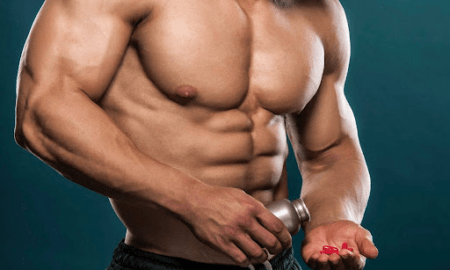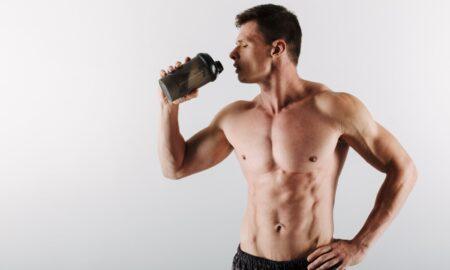In August 2005, at a meeting of the American Sugar Alliance, the group issued a statement that might surprise many. The statement said that the link between eating sugar and getting fat is a myth. The true culprit in the growing trend toward increased obesity is actually too much food, coupled with a lack of exercise. The group pointed out that sugar intake has declined to an estimated 63 pounds per person in 2002 from a previous average of 102 pounds in 1972. That’s sugar consumed over a year, not in one sitting.
The president of the Sugar Association, Andrew Briscoe, also had something to say: “We believe in calories in and calories out. Sugar is not part of obesity issues.” He remarked that most people think a tablespoon of sugar contains 76 calories, when in fact it contains only 15 calories.
While Briscoe and his group certainly have a vested interest in sugar consumption, the truth is that the majority of scientifically published material agrees with him: Sugar is not the villain that most people think it is. Although in one form or another sugar has been linked to such maladies as cardiovascular disease, cancer and obesity, the only direct link between sugar and disease is in the onset of dental caries, or cavities—and even there the evidence is scant. Dental cavities are related to genetics, diet, oral acidity levels and other factors not directly connected to how much sugar you eat.
The one exception to the sugar-as-benign-nutrient idea is high fructose corn syrup, a concoction of glucose and fructose that appears to be a primary cause of the increased rates of obesity. HFCS has no nutritionally redeeming qualities other than convenience and greater shelf life. Still, the notion that eating sugar is bad for you persists.
Sugar Basics
Humans are born with a preference for sweetness. In the womb human fetuses float in a gentle bath of sweet amniotic fluid. Soon after being born, most babies get breast milk as their primary food. Breast milk is rich in lactose, also known as milk sugar.
When most people think of sugar, they think about sucrose, or table sugar. To a chemist, sugars are a group of compounds containing carbon, hydrogen and oxygen. The two main types are monosaccharides, or single sugars, such as glucose, fructose and galactose, and disaccharides, which contain two monosaccharides bonded together. Sucrose, like lactose and maltose, is a disaccharide consisting of glucose and fructose.
Digestion of sugar begins in the mouth, but the majority of digestion and absorption occurs in the small intestine, where specific enzymes degrade the sugar into monosaccharides. Fructose is absorbed differently from other sugars—far more slowly. For that reason, fructose doesn’t promote an insulin response.
Degraded sugars pass through the cells of the small intestine into a capillary portal that takes them directly to the liver, where a phosphate atom is added. The only sugar released into the blood is glucose, which travels to the brain, kidneys, muscle cells and fat cells. Since glucose is the primary fuel for the brain, 130 grams a day are required for proper brain function. That doesn’t mean you need to eat 130 grams of carbohydrate a day; glucose is also made in the liver from certain amino acids and the glycerol from fat.
The primary fate of glucose is either to be stored as glycogen in liver and muscle or to circulate in the blood for use as energy by various body tissues. The breakdown of glucose to provide energy is known as glycolysis. Most sugars degrade during the process into two pyruvate molecules. Pyruvate is either completely oxidized in the primary energy pathway—the Krebs cycle—and in the electron transport system in the cellular mitochondria to yield the ultimate energy source, adenosine triphosphate (ATP), or is converted into lactate. You get lactate when there’s relatively little oxygen onboard, such as during an anaerobic exercise like weight training. The blood transports lactate released from muscle during exercise to the liver, where it’s reconverted into glucose, which then circulates back to the working muscle as an energy source.
Each gram of glycogen is stored with 2.7 grams of water. If glycogen stores are filled to capacity and you take in more carbohydrate, the carbs will convert into fat. But it’s not that simple.
The body converts carbs into fat inefficiently. One study found that it took 68 percent more energy to convert carbs into fat than to shuttle fat into fat stores. Those who criticize low-carb diets often mention the difficulty of converting carbs into bodyfat. On the other hand, carbs are the body’s preferred fuel source. If you eat fat and carbs together, the body burns the carbs first and stores the fat. If you restrict carbs, as during a typical low-carb diet, the body switches to using stored fat as its primary energy source. Other factors also come into play here, such as insulin output, which is reduced under low-carb conditions. When insulin release is reduced, fat is more easily oxidized.
Do Carbs Cause Heart Disease?
Critics of low-carb diets cite their higher fat and cholesterol intake as a cause of cardiovascular disease. Research conducted in recent years, however, shows that CVD is not a danger. If anything, low-carb diets help prevent CVD by reducing triglycerides, or fat, in the blood, and elevating high-density lipoprotein, the protective blood cholesterol.
Blood triglycerides were long thought to play a minimal role in CVD, but later research showed that they weren’t innocent metabolic bystanders. Excess blood triglycerides are converted in the liver into very-low-density lipoproteins, then converted into low-density lipoproteins. LDL is a primary link to CVD, scientists say; the lower the LDL, the better.
What increases blood triglycerides? You’d think that would be fat, but in fact BTs are increased mainly by excessive alcohol and sugar intake. Compared to starches, sugars increase BTs by an average of 60 percent. The people most at risk for elevated BT levels after eating sugar are those who don’t exercise and have a lot of fat in the gut area—visceral, or deep-lying, fat. The big controversy is precisely which type of sugar is most efficient at raising BT levels. Most of the evidence points to fructose. Since sucrose or table sugar is half fructose, it, too, is implicated in elevated BTs.
ALLLuckily, you’ve got two simple cures for elevated BTs. One is to take more fish oil. The fatty acids in fish oil decrease BT an average of 60 percent—the other side of the sugar-intake coin. The other cure is exercise, which increases the activity of a fat-cell enzyme called lipoprotein lipase in removing excess BTs. The triglyceride is then oxidized as an energy source for the exercise.
Why Would Sugar Make You Fat?
Sugar has a number of properties that tend to blunt its obesity-generating effects. Surprisingly, one has to do with insulin, the same hormone that low-carb-diet advocates link to getting fat.
Among its many functions, insulin turns off the appetite. Many studies have shown that when animals are given a sugar solution before eating a meal, they wind up eating less food. Most likely, that’s the result of an insulin surge produced by the sugar intake.
Sugar affects brain chemicals related to appetite control. The urge to eat sugar is itself the result of an abundance of neuropeptide Y. Various experimental drugs that blunt the effects of neuropeptide Y would have the effect of curtailing the urge to consume sugar. Many people tend to overeat carbs because it induces a feeling of pleasure. That, too, has a chemical basis.
Eating sugar promotes the release of natural opioid chemicals in the brain that have a calming effect. Eating sugars offers a “feel-good” effect by interacting with the brain’s reward centers through the chemical dopamine. Reward centers are also affected by such drugs as cocaine and alcohol, which explains why many who use those drugs have a sweet tooth.
Another reason sugar isn’t all that fattening is that eating sugars increases the gene expression for uncoupling protein-3 in muscle.1 UCP-3 converts fat calories into heat, a thermogenic effect. Thyroid hormone is also thought to work through this protein. So when the activity of UCP-3 is high, you burn more fat at rest and during exercise. The production of UCP-3 is related to an increase of neuropeptide-Y gene expression, which is directly related to sugar intake.
When you eat sugars, a hormone in the gut called glucagon peptide-1 is increased. GLP-1 is released when sugars make contact with the cells of the small intestine. It decreases gastric, or stomach, emptying, which has the result of making you feel fuller—which curtails appetite.2
Sugar and Training
The two primary sources of energy for exercise are carbs and fat. Protein can be used as an energy source, but it’s inefficient. In addition, the body won’t use protein as an energy source for a workout unless the other two sources of energy aren’t available. That pertains mainly to carbs, since the use of fat as a rapid energy source is limited by fatty acid uptake into muscle.
Bodyfat as a sole energy source would provide enough energy for seven days of moderate-intensity exercise. Compare the measly two hours supplied by stored glycogen and blood glucose. The problem with fat is that as exercise intensity level increases, the body’s reliance on fat as a fuel source decreases. For high-intensity exercise, such as typical bodybuilding sessions, carbs are the primary fuel source.
Carbohydrate is stored as glycogen in liver and muscle, but the glycogen stored in any particular muscle can be used only by that muscle. When muscle glycogen stores get depleted, fatigue ensues. Muscles contains 79 percent of the body’s glycogen, while the liver contains 14 percent. The blood contains 7 percent of the carb as circulating blood glucose. The higher the exercise intensity, the greater the depletion of muscle glycogen. One study showed that doing three sets of curls to failure resulted in a 70 percent depletion of biceps glycogen stores.
Attempting to train while muscles are depleted of glycogen is a mistake for several reasons. For one, muscles don’t fully recover between workouts unless glycogen is replenished, with the primary route being carbohydrate intake. Many sports scientists suggest that hard-training athletes get seven grams of carbs per kilogram (2.2 pounds) of bodyweight to ensure adequate muscle glycogen replenishment between workouts. You can’t train intensely without full muscle glycogen stores. You’ll find that fatigue sets in early in the workout, and your degree of muscle pump will be negligible. In addition, when you’re low in muscle glycogen, your chances of injury are greater due to depressed nervous system reactions.
Eating carbs about two hours prior to training may help restore some muscle glycogen, since it takes about 24 to 48 hours to fully replenish a glycogen-depleted muscle. The preexercise meal, though, increases blood glucose levels, providing a greater sense of energy for the workout. The usual suggestion is to focus on low-glycemic-index carbs, or carbs that don’t elicit a significant insulin release. Eating too many high-glycemic-index carbs before training may cause some people to experience premature fatigue during the workout due to a lowering of blood glucose as a result of excess insulin activity.
Eating some protein before a workout is a good idea if you get some carbs at the same time. The branched-chain amino acids leucine, isoleucine and valine oppose the uptake of another amino acid, L-tryptophane, into the brain. Carbs promote that uptake by promoting insulin release. In the brain, tryptophane converts into serotonin, a calming neurotransmitter that can cause workout fatigue, especially when workouts exceed one hour. By blocking the uptake of tryptophane, BCAAs can prevent that effect.
What about taking in carbs during a workout? Some studies show that a drink containing no more than 8 percent carbs can decrease subjective feelings of fatigue, leading to more intense training. Other studies show that taking in carbs during training blunts the release of the primary catabolic hormone, cortisol. On the flip side, consuming carbs while training blunts fat use during the workout—a moot point anyway since a weight workout doesn’t use much fat. One sugar to avoid during training is fructose, which can cause stomach cramps.
After-workout carbs, especially high-glycemic carbs, are vital for efficient glycogen replenishment. The effect is increased by also adding protein in a 3-to-1 ratio of carbs to protein. Some studies show a 37 percent increase in muscle glycogen replenishment over taking carbs alone. The effect is thought to be due to increased insulin release fostered by the amino acids in protein. A quick-acting protein, such as whey, is best. Many studies show that any carbs you get within two hours after a workout are used exclusively for glycogen replenishment; there’s no spillover into fat, nor is there any blunting of fat oxidation.
If you’re still worried about the effect of eating simple sugars on health, take a natural eucalyptus leaf extract. In a recent experiment using rats as subjects, ELE extract inhibited the intestinal absorption of fructose and suppressed fat gain from eating sucrose.3 The researchers weren’t sure how the extract blocked fructose, but it seemed to inhibit the activity of sucrase, the intestinal enzyme that degrades sucrose. The rats that got ELE had lowered liver triglyceride levels too. Don’t be surprised if it shows up in a future “fat-burning” supplement.
References
1 Levine, A.S., et al. (2003). Sugars: Hedonic aspects, neuroregulation, and energy balance. Am J Clin Nutr. 78(Supp):834S-842S.
2 Anderson, G.H., et al. (2003). Consumption of sugars and the regulation of short-term satiety and food intake. Am J Clin Nutr. 78(Supp):843S-849S.
3 Sugimoto, K., et al. (2005). Eucalyptus leaf extract inhibits intestinal fructose absorption and suppresses adiposity due to dietary sucrose in rats. Brit J Nutr. 93:957-963. IM




















You must be logged in to post a comment Login